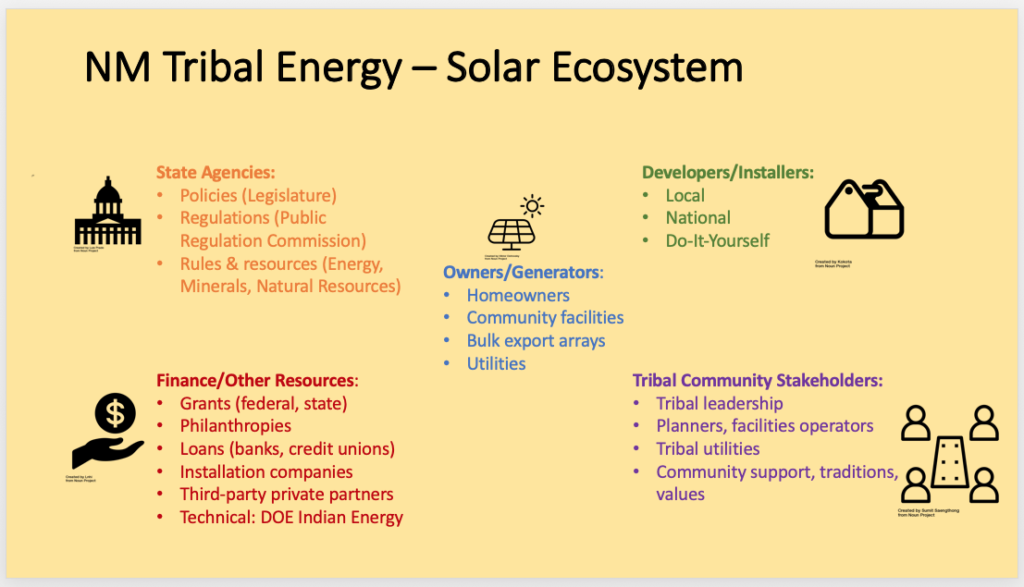“To believe in sovereignty, to move through the world imbued with the dignity of that reality, is to resolve one of the major contradictions of modern Indian life: It is to find a way to be Indian and modern simultaneously.”
“The Heartbeat of Wounded Knee,” by David Trauer (Ojibwe)
Getting started with a tribal solar energy project can seem very complex and even overwhelming, with many moving parts and players. But with a clear road-map in hand, and adequate time and attention to detail, there is every reason to succeed. There are also resources available to assist tribes with their process.
As a first step, it’s important to define the type and scale of project to pursue; to consider any cultural factors that might bear on energy development and land use; and to engage broad support from tribal staff, leadership, and community members that can last over a multi-year period, as needed.
This process of getting “buy in” from tribal governments to implement solar energy on tribal lands is essential. It requires careful and sustained effort, and often a project “champion,” as described in this interview with Bernadette Cuthair, Director of Planning & Development for the Ute Mountain Ute Tribe in Towaoc, Colorado. Tools like this ESI website, and many of the resources to which it links, can also be helpful in educating and engaging tribal staff and leadership.
Types of Projects
There are three main categories of projects and approaches in New Mexico, where solar energy is the best renewable resource on most tribal lands
- Residential and community scale solar (including off-grid)
- Utility export scale solar
- Solar community microgrid
These offer opportunities for many different sizes of tribal communities, and levels of expertise; and they require various levels of pre-planning, financial resources, technical capacity, and commitment in the form of tribal government and staff support over varying periods of time.
All types of energy projects should be considered as part of the New Mexico tribal energy “ecosystem,” which has many stakeholders and participants, depicted in the graphic below:

Information on the main principles of planning and developing each type of project can be found in these pages:
- Residential and community installations (homes, clinics, community centers)
- Potential economic benefits (reduced electricity bills)
- Relatively inexpensive and fast, usually rooftop
- Large solar arrays designed to sell output to utilities
- Dependable economic benefits (revenue from sale of power)
- Lengthier time frame and finance process, needs large tracts of land
- Community resilience systems using solar generation
- Maintain power to critical users during blackouts
- Sophisticated technology and complex process


